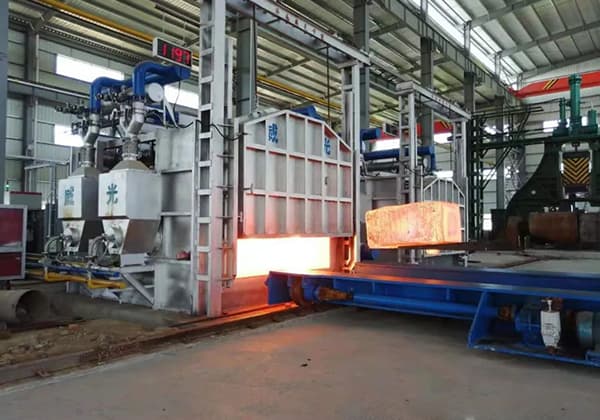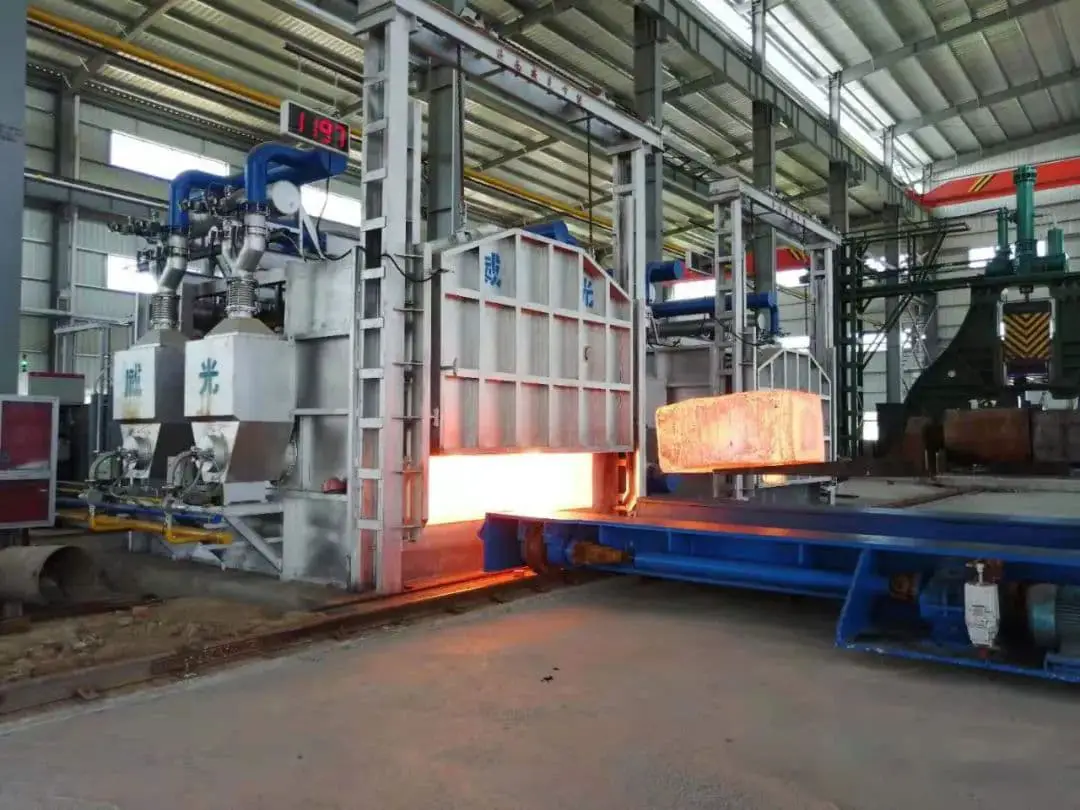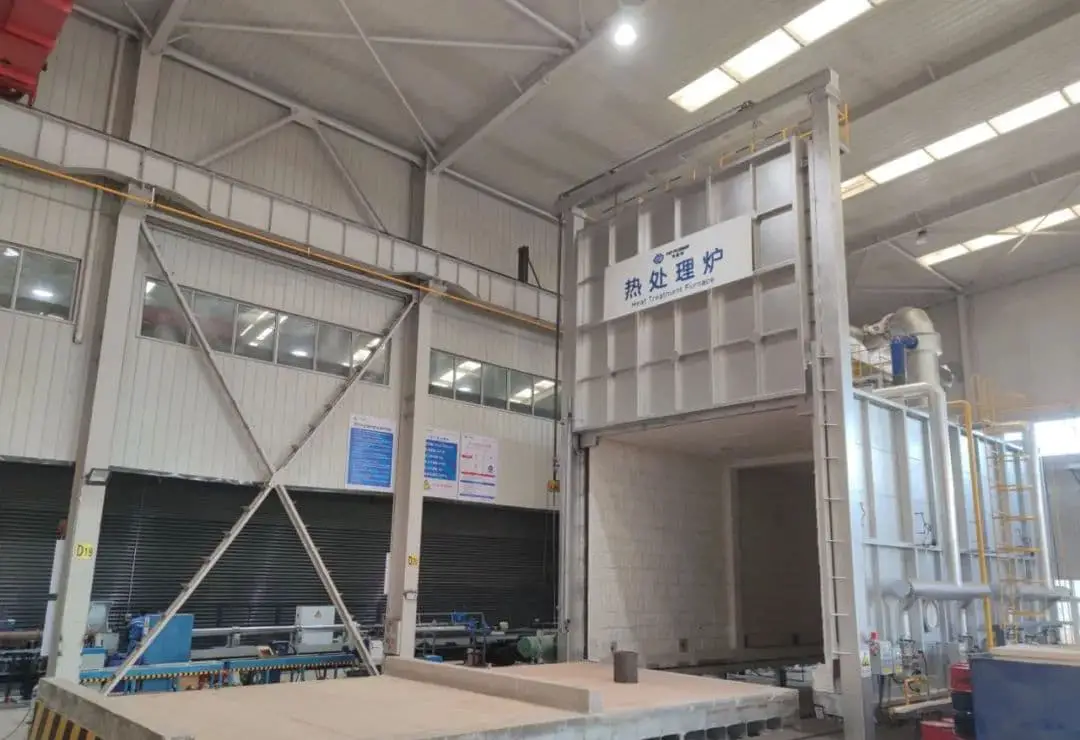
Ever wondered how modern industry tames the raw power of fire? Industrial furnaces are the unsung workhorses in processes like smelting, melting, and heating. This article dives into the classification of these essential machines, explores energy-saving innovations, and addresses the environmental challenges they face. Readers will gain insights into the latest technologies driving efficiency and sustainability in industrial operations.

Industrial furnaces and kilns, used for processes such as smelting, roasting, sintering, melting, and heating, have been present in China since the Shang Dynasty, with furnace temperatures capable of reaching 1200°C.
During the Spring and Autumn Period, the development of furnace technology led to the production of cast iron.
In 1794, the world saw the introduction of a straight cylindrical cupola for cast iron smelting.
Then, in 1864, Martin of France built the first open hearth steel-making furnace fueled by gas, based on the regenerative furnace principle developed by Siemens of Britain. By preheating the air and gas in the regenerative chamber, the furnace was able to reach the temperature of 1600°C required for steelmaking.
By the 1920s, sufficient power supplies were available, leading to the widespread use of resistance furnaces, electric arc furnaces, and cored induction furnaces in industry. At the same time, the introduction of mechanized and automatic furnaces improved both productivity and working conditions.
In the 1950s, coreless induction furnaces experienced rapid growth. Later, the electron beam furnace was invented, using electron beams to impact solid fuel to heat and melt high-melting point materials.

At present, China has approximately 130,000 industrial furnaces, primarily located in the metallurgy, building materials, machinery, and chemical industries, which account for over 85% of the total number of furnaces.
The annual energy consumption of these furnaces is 25% of the national energy consumption, with roughly equal portions attributed to fuel furnaces and electric furnaces.
There are several key challenges faced by industrial furnaces in China, including outdated combustion methods, high labor intensity, environmental pollution, excessive reburning, low thermal efficiency, and inadequate automatic monitoring and control systems.
Industrial furnaces can be classified based on process characteristics, working temperature, thermal operation characteristics, and working system.
Common types of industrial furnaces and kilns include smelting furnaces, melting furnaces, heating furnaces, petrochemical furnaces, heat treatment furnaces, sintering furnaces, chemical working furnaces, calcining furnaces and kilns, drying furnaces and kilns, electric arc furnaces, induction furnaces for high-temperature smelting, coke ovens, incinerators, and others.

Classification code table of industrial furnaces
| Code | Industrial furnace category | Code | Industrial furnace category |
| 010 | Smelting furnace | 071 | Calcium carbide furnace |
| 011 | Blast furnace | 072 | General calciner |
| 012 | Steelmaking furnace and mixer | 073 | Fluidized bed furnace |
| 013 | Ferroalloy smelting furnace | 079 | Other chemical furnaces |
| 014 | Non ferrous metal smelting furnace | 080 | Firing kiln |
| 020 | Melting furnace | 081 | Cement kiln |
| 021 | Steel melting furnace | 082 | Lime kiln |
| 022 | Non ferrous metal melting furnace | 083 | Refractory furnace |
| 023 | Non metal melting furnace and smelting furnace | 084 | Daily ceramic kiln |
| 024 | Cupola | 085 | Building sanitary ceramic kiln |
| 030 | Heating furnace | 086 | Brickyard |
| 031 | Steel continuous heating furnace | 087 | Tang porcelain firing kiln |
| 032 | Non ferrous metal heating furnace | 088 | Other firing kilns |
| 033 | Steel intermittent heating furnace | 090 | Drying furnace (kiln) |
| 034 | Soaking pit | 091 | Casting drying furnace (kiln) |
| 035 | Non metal heating furnace | 092 | Cement drying furnace (kiln) |
| 039 | Other heating and holding furnaces | 099 | Other drying furnaces (kilns) |
| 040 | Petrochemical furnace | 100 | Smoke burning furnace (kiln) |
| 041 | Tubular furnace | 110 | Arc furnace |
| 042 | Contact reactor | 120 | Induction furnace (high temperature smelting) |
| 043 | Cracking furnace | 130 | Coke oven |
| 049 | Other petrochemical furnaces | 131 | Coal coke oven |
| 050 | Heat treatment furnace (<1000 ℃) | 132 | Oil coke oven |
| 051 | Steel heat treatment furnace | 140 | Chu burning furnace |
| 052 | Non ferrous metal heat treatment furnace | 141 | Solid waste incinerator |
| 053 | Non metal heat treatment furnace | 142 | Alkali recovery furnace |
| 054 | Other heat treatment furnaces | 143 | Chu household stove |
| 060 | Sintering furnace (black metallurgy) | 144 | Hospital waste Chu burning furnace |
| 061 | sintering machine | 145 | Gas dream burner |
| 062 | Pellet shaft furnace, belt pelletizing | 149 | Other Dream Burners |
| 070 | Chemical working furnace | 190 | Other industrial furnaces |
The energy consumption of industrial furnaces is influenced by numerous factors, however, the current primary methods for energy conservation include optimization of design, enhancement of equipment, utilization of waste heat, and enhancement of monitoring control and production management.
In China, despite the presence of advanced technologies globally, many industrial furnaces have limitations. This is coupled with the high cost of replacement and a significant increase in energy consumption. Thus, scientific and technological innovation is crucial.
To achieve energy-saving technical transformation, scientific testing methods are essential. These methods help to gain a comprehensive understanding of the thermal process of industrial furnaces, analyze and diagnose any issues, and determine the root cause.
Among the available thermal testing methods, the thermal balance test is widely recognized. It measures the thermal efficiency of the industrial furnace, leading to improved thermal efficiency, reduced unit consumption, and the determination of various economic and technical performance indicators of the furnace’s operation.
By analyzing the operating conditions of the heating furnace, its working conditions can be adjusted to reach optimal operating state, thereby finding effective ways and directions for energy conservation. This is the primary objective of thermal testing.
However, there are certain challenges associated with thermal testing methods, such as the complexity of testing and the difficulty in accurately simulating stable production conditions, which can result in a large gap between testing results and actual performance.
Therefore, the future development of testing technology will be a focus of research for experts and scholars.
After conducting the test, we now have a preliminary understanding of the furnace, which serves as a foundation for its technical transformation.
When designing the furnace, it’s advisable to adopt a new energy-saving furnace that meets the production process requirements as much as possible.
During the design process, factors such as the type of furnace, material, seal, heat transfer (combustion) process, and temperature distribution are typically taken into consideration.
According to available data, the following are the main energy-saving measures:
(1) The use of a circular furnace instead of a box furnace can enhance the uniform heat transfer to the workpiece, reduce heat dissipation from the furnace wall, and create a heat exchange system within the furnace to facilitate heat exchange between the heating elements, furnace lining, and workpiece.
By optimizing the furnace space and increasing the inner wall area, the heat exchange efficiency can be improved by increasing the heat exchange area.
(2) The installation of a fan in the furnace can improve convection heat transfer. This is especially important for small heating furnaces, as high-speed airflow can disrupt the stagnant boundary layer of furnace gas on the surface of the workpiece and shorten the heating time by accelerating the increase in the workpiece temperature.
(3) Furnace body sealing is crucial, including sealing of various components that lead out of the furnace, the furnace shell, and the furnace door.
If the furnace body is not sealed properly, it will lead to fire running and leakage, resulting in a significant energy waste, equipment damage, and unfavorable environmental conditions.
Therefore, the quality of the workpieces and energy consumption are directly affected by the furnace body sealing. Additionally, sealing is also crucial for controlling the atmosphere within the furnace.
The appearance of refractory fiber products has created opportunities for solving the problem of sealing the furnace body and achieved soft sealing.
(4) The heating furnace with refractory castable as a whole has high strength, integrity, good airtightness, and a long service life.
(5) New furnace materials are utilized to optimize the furnace lining structure.
While ensuring the structural strength and heat resistance of the furnace, the furnace lining should aim to improve insulation capacity and reduce heat storage. Simply increasing the lining thickness to lower the furnace wall temperature will result in increased lining heat storage, higher cost, and reduced utilization of the furnace bottom area.
The insulation layer is made up of refractory fiber and rock wool, and the furnace body lining is made of light brick, which reduces heat storage loss, enhances heat insulation, and decreases heat dissipation loss of the furnace wall.
(6) Applying high temperature, high radiation coating on the inner wall of the furnace enhances radiation heat transfer in the furnace, promoting full utilization of heat energy. This energy-saving method has an effect of 3% to 5% and is considered an advanced energy-saving method for the near future.
(7) Different burners are used according to different working conditions, such as flame regulating burners, flat flame burners, high-speed nozzles, self-preheating burners, low nitrogen oxide burners, and the newly developed regenerative burners, providing a range of advanced burners to suit the use of gas and diesel.
The correct use of efficient advanced burners can generally result in energy savings of more than 5%. Flat flame burners are most suitable for heating furnaces, while high-speed burners are suitable for various heat treatment furnaces and heating furnaces.
Self-preheating burners, which combine burners, heat exchangers, and smoke exhaust devices, are suitable for various industrial furnaces, such as heating, melting, and heat treatment.
(8) The selection of energy-efficient combustion devices, paired with efficient fans, oil pumps, valves, thermal detection and automatic control systems, can greatly improve energy savings, depending on the type of fuel.
Conventional energy-saving combustion technologies include high-temperature air combustion, oxygen-enriched combustion, heavy oil emulsification, oxygen-enriched pulverized coal injection for blast furnace, and magnetization treatment of ordinary furnace fuel.
Of these, high-temperature air combustion and oxygen-enriched combustion are the most widely used.
High-temperature air combustion technology was developed in the 1990s and allows for air preheating to reach 95% of the flue gas temperature through regenerative flue gas recovery. This results in a uniform furnace temperature of ≤± 5 ℃ and a combustion thermal efficiency of 80%.
This technology has several advantages, such as high efficiency, energy savings, environmental protection, low pollution, stable combustion, a large combustion area, wide fuel adaptability, easy combustion control, reduced equipment investment, longer furnace life, and easy operation.
However, there are still some challenges to be addressed, such as optimizing the control and regulation systems, improving the relationship between the thermal parameters and design structure, gas quality and regenerator, and the life of the regenerator and regenerative heating furnace.
Oxygen-enriched combustion technology involves using gases with oxygen concentrations higher than 21% in combustion. The goal is to develop burners suitable for industrial furnaces.
This technology has several benefits, such as reducing heat loss from the furnace exhaust, increasing the flame temperature, extending the life of the furnace, increasing output, reducing equipment size, improving production cleanliness, and facilitating the recovery, comprehensive utilization, and storage of CO2 and SO2.
However, the increased oxygen content in oxygen-enriched combustion also leads to a sharp rise in temperature and increased NOx, which limits its adoption in various fields. When designing an industrial furnace to use oxygen-enriched air for combustion, it is important to avoid uneven temperature fields in the furnace.
Waste heat can be categorized into seven types: high-temperature waste gas, cooling medium, waste steam and water, high-temperature products and slag, chemical reactions, combustible waste gas, and residual pressure from high-pressure fluid.
According to surveys, the total waste heat produced by various industries ranges from 17% to 67% of total fuel consumption, with 60% being recyclable waste heat resources.
Flue gas is responsible for taking away 30% to 70% of the total heat supplied by fuel furnaces.
As such, the recovery and utilization of waste heat in flue gas is crucial for energy conservation. This can be achieved through:
(1) Installing preheaters to preheat the combustion supporting air and fuel using flue gas.
(2) Installing waste heat boilers to generate hot water or steam for production or domestic purposes.
(3) Using flue gas as the heat source for low-temperature furnaces or preheating cold workpieces or furnace charges.
In China, preheaters for preheated air have been in use in industrial furnaces since the 1950s, primarily in the form of tubular, cylindrical radiant, and cast iron block heat exchangers. However, the exchange efficiency is low.
In the 1980s, domestic heat exchangers such as jet type, jet radiation type, and double table type were developed successively to address the issue of waste heat recovery in medium and low temperature applications. These developments resulted in significant improvements in the waste heat recovery of flue gas at temperatures below 100°C.
However, at high temperatures, the limitations of heat exchanger materials, including low service life, high maintenance requirements, and high costs, still pose challenges to the promotion and use of these systems.
In the early 21st century, China developed a ceramic heat exchanger, which has the same production process as kiln furniture. The main application properties of the materials used are thermal conductivity and oxidation resistance. This heat exchanger operates by placing it near the flue outlet, where temperatures are high, without exposing it to cold air or requiring high temperature protection.
When the furnace temperature is between 1250-1450°C, the flue outlet temperature should be 1000-1300°C. The ceramic heat exchanger is able to recover waste heat up to 450-750°C. The recovered hot air is then sent back to the furnace to mix with fuel gas for combustion, resulting in a 35%-55% reduction in energy usage and a corresponding decrease in production costs.
The ceramic heat exchanger has proven to be a valuable solution in cases where metal heat exchangers are limited by corrosion and high temperature resistance. Its advantages include good thermal conductivity, high temperature strength, good oxidation resistance, thermal shock resistance, long service life, low maintenance requirements, reliable performance, and simple operation.
Ceramic heat exchangers are widely used in a variety of industries, including metallurgy, non-ferrous, refractory, chemical, and building materials, for recovering waste heat from high-temperature flue gas. Other types of high-efficiency heat exchangers that have become popular in China include sheet heat exchangers, various jet heat exchangers, insert tube heat exchangers, cyclone tube heat exchangers, fried dough twist tube heat exchangers, various combined heat exchangers, gas tube heat exchangers, and heat storage heat exchangers.
The regenerative heat exchanger is expected to be the technical development trend for the future, as it can lead to energy savings of over 30% when the exhaust gas emission temperature after heat utilization is below 200°C.
The superconducting heat pipe is the main heat conduction component of waste heat recovery systems, and offers advantages over traditional heat exchangers. The heat exchange efficiency of heat pipe waste heat recovery systems can reach over 98%, which is unattainable with traditional heat exchangers. Additionally, these systems are smaller, with a size only 1/3 that of ordinary heat exchangers.
At present, industrial furnaces in our country consume a large amount of energy and generate significant waste. The problem of excessive air excess coefficient is also common.
This is largely due to outdated regulatory methods, high labor intensity for workers, and difficulty in maintaining ideal combustion conditions.
Improving the level of thermal detection and control can therefore result in significant energy savings.
The development direction of industrial furnace automatic control is toward advanced automatic control technology, particularly microcomputer control systems.
By implementing an automatic control system, energy can be saved through efficient and accurate coordination and control of relevant systems, such as precise control of heating furnace main process variables, temperature and fuel flow cascade control, fuel and combustion air ratio control, and control of flue gas oxygen content.
In conclusion, the furnace industry has ample room for growth and improvement in the areas of energy efficiency, thermal detection techniques, and waste heat utilization over the next few years.
Although the traditional balance method will likely remain the dominant method for thermal detection for the time being, it is important to continuously seek out and develop new methods.
Moreover, transitioning from fossil fuels to clean and renewable energy sources as the primary energy source for industrial furnaces and reducing emissions will become a crucial area of research in the future.








